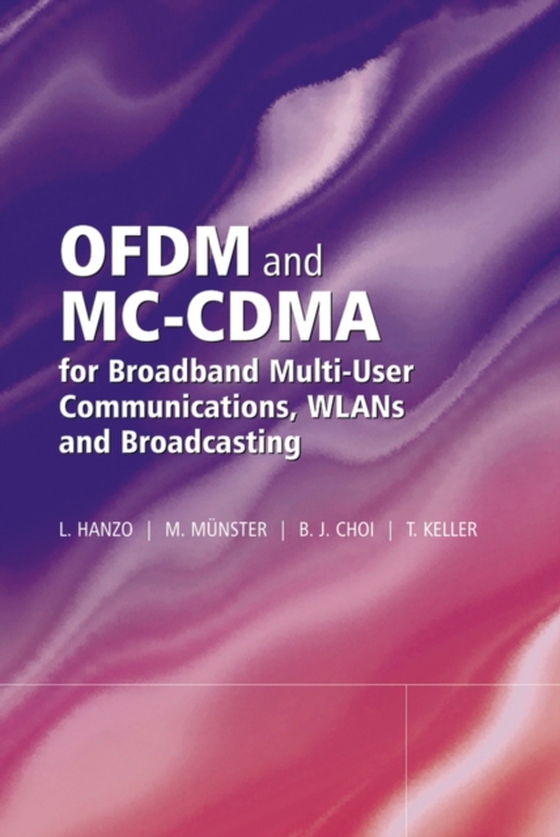
OFDM and MC-CDMA for Broadband Multi-User Communications, WLANs and Broadcasting e-bog
2190,77 DKK
(inkl. moms 2738,46 DKK)
Orthogonal frequency-division multiplexing (OFDM) is a method of digital modulation in which a signal is split into several narrowband channels at different frequencies. CDMA is a form of multiplexing, which allows numerous signals to occupy a single transmission channel, optimising the use of available bandwidth. Multiplexing is sending multiple signals or streams of information on a carrier...
E-bog
2190,77 DKK
Forlag
Wiley-IEEE Press
Udgivet
28 januar 2005
Genrer
Electronics and communications engineering
Sprog
English
Format
pdf
Beskyttelse
LCP
ISBN
9780470861806
Orthogonal frequency-division multiplexing (OFDM) is a method of digital modulation in which a signal is split into several narrowband channels at different frequencies. CDMA is a form of multiplexing, which allows numerous signals to occupy a single transmission channel, optimising the use of available bandwidth. Multiplexing is sending multiple signals or streams of information on a carrier at the same time in the form of a single, complex signal and then recovering the separate signals at the receiving end. Multi-Carrier (MC) CDMA is a combined technique of Direct Sequence (DS) CDMA (Code Division Multiple Access) and OFDM techniques. It applies spreading sequences in the frequency domain. Wireless communications has witnessed a tremendous growth during the past decade and further spectacular enabling technology advances are expected in an effort to render ubiquitous wireless connectivity a reality. This technical in-depth book is unique in its detailed exposure of OFDM, MIMO-OFDM and MC-CDMA. A further attraction of the joint treatment of these topics is that it allows the reader to view their design trade-offs in a comparative context. Divided into three main parts: Part I provides a detailed exposure of OFDM designed for employment in various applications Part II is another design alternative applicable in the context of OFDM systems where the channel quality fluctuations observed are averaged out with the aid of frequency-domain spreading codes, which leads to the concept of MC-CDMA Part III discusses how to employ multiple antennas at the base station for the sake of supporting multiple users in the uplink Portrays the entire body of knowledge currently available on OFDM Provides the first complete treatment of OFDM, MIMO(Multiple Input Multiple Output)-OFDM and MC-CDMA Considers the benefits of channel coding and space time coding in the context of various application examples and features numerous complete system design examples Converts the lessons of Shannon s information theory into design principles applicable to practical wireless systems Combines the benefits of a textbook with a research monograph where the depth of discussions progressively increase throughout the book This all-encompassing self-contained treatment will appeal to researchers, postgraduate students and academics, practising research and development engineers working for wireless communications and computer networking companies and senior undergraduate students and technical managers.
 Dansk
Dansk

